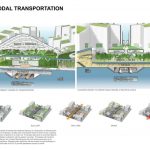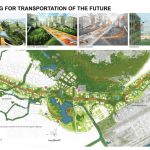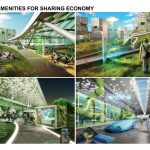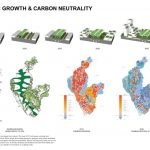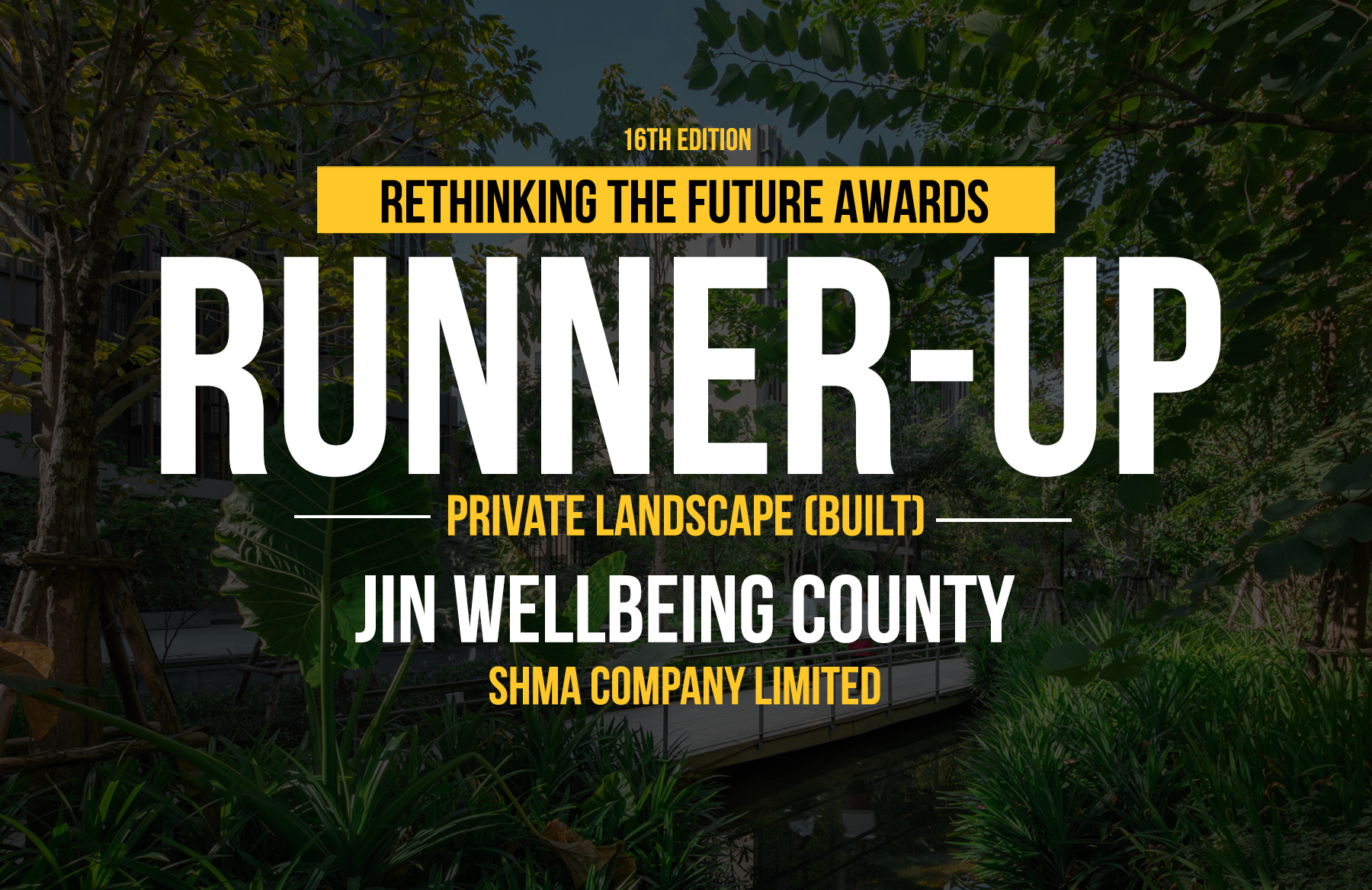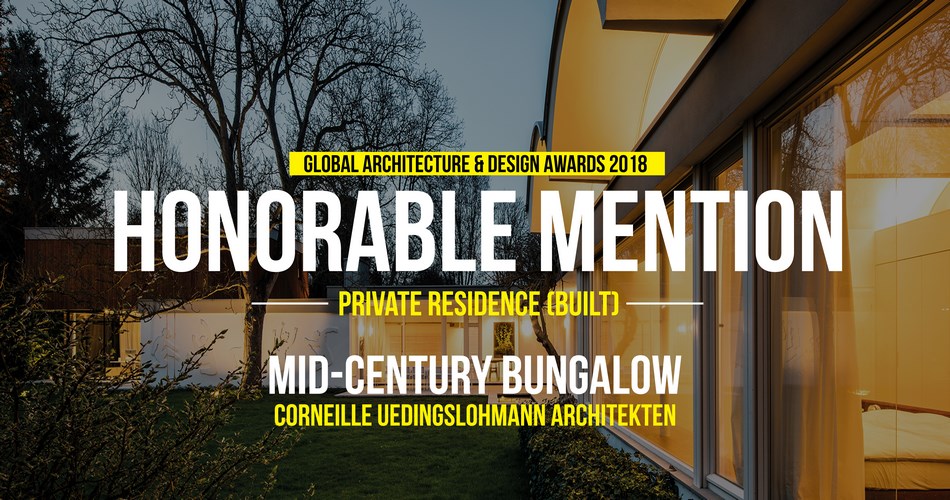Design Brief for Organic Highway: Bao’an is upgrading its manufacturing sector to be sustainable and technology oriented, the government also wants to modernize its 30km long 12-lane G107 highway to allow for more efficient transit and new real estate development. We started the G107 challenge by questioning the role of a highway. We propose that traditional highways are outdated and inefficient. Our proposal will demonstrate that multimodal transportation systems with drones, auto-pilot vehicles and high-speed transit are the future of 21st century urban development.
Second Award | RTFSA 2016 Awards
Category: Urban Design (Concept)
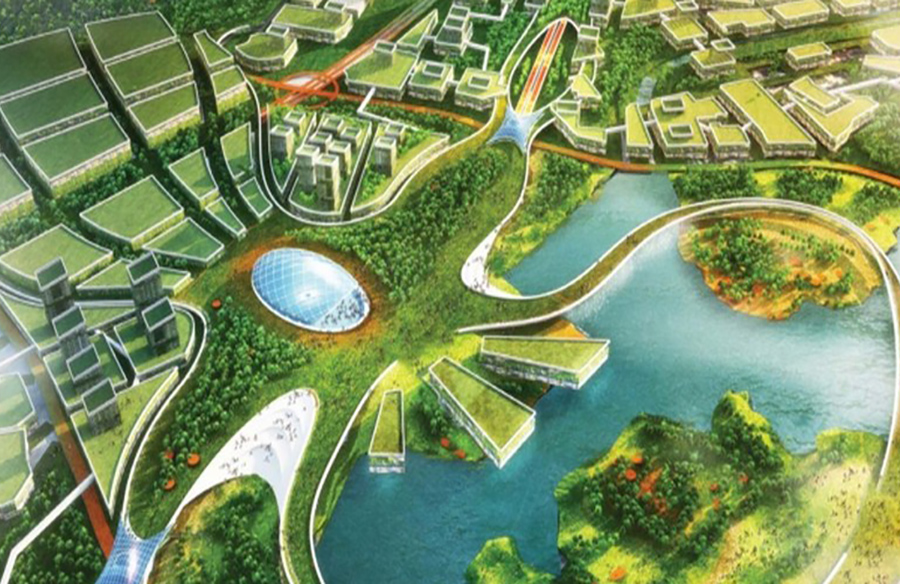
| Project Details | |
| Participant Name: | Vicky Chan |
| Team Member: | Avoid Obvious Architects + Tetra Architects & Planners, Poon Richard Alomar Erik Madsen Ching-Yu Lin |
| Country: | Hong Kong |
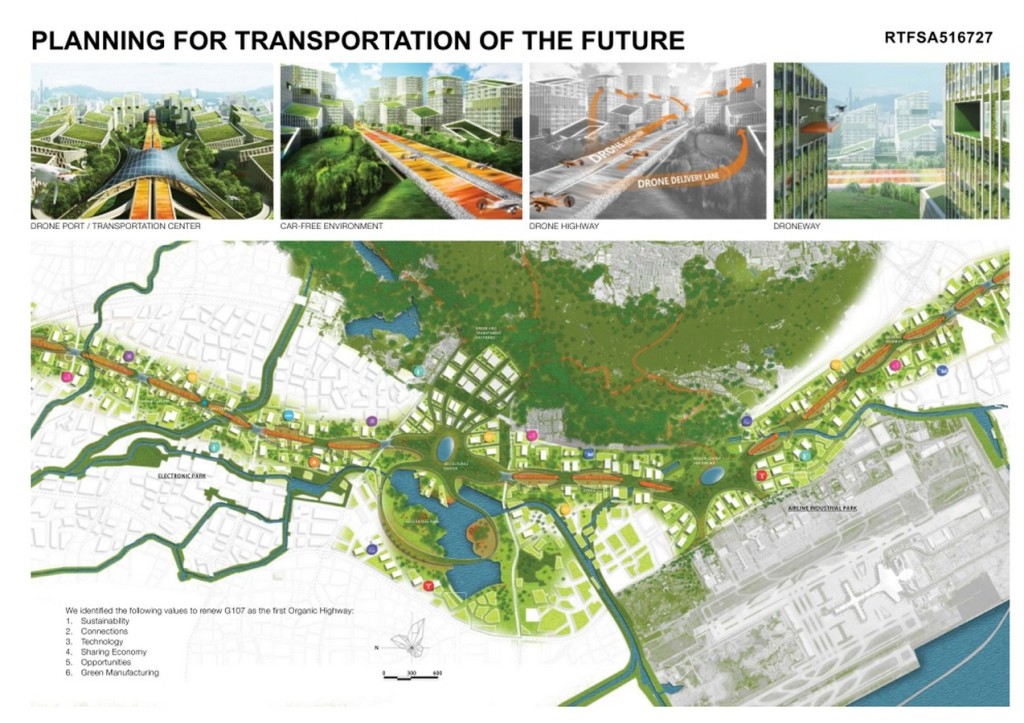
©Avoid Obvious Architects
Concept: Instead of treating the traditional highway as a fixed piece of infrastructure, we will design a smaller and multi-layered network which will be a starting point of growth for a smart city. The project also aims to reconnect Bao’an Western waterfront with its eastern mountain. The design will transform Bao’an into a Green Manufacturing City with sharing economy as its backbone. We also identified the following values to renew G107 as the first Organic Highway:
- Sustainability
- Connections
- Technology
- Sharing Economy
- Opportunities
- Green Manufacturing
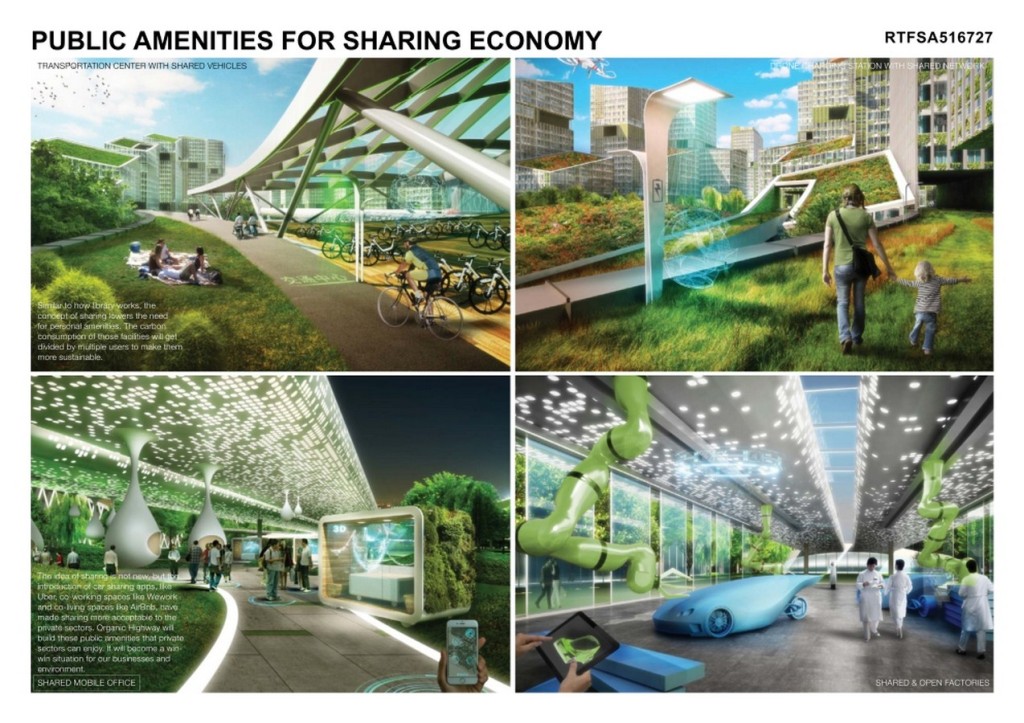
©Avoid Obvious Architects
Urban Design: We borrowed design principles from nature. The new G107 will weave vertically and horizontally throughout its 30km length and create spaces for greenery and public amenities. Elevated green platforms will also weave through buildings on both sides of G107 to provide pedestrian access to transit. Multimodal transit hub will be employed at all intersection to make all parts of the city reachable within 15mins.
Sustainable Design and Holistic Approach: Landscape treatment, water management and transportation are tied closely together with the new G107. With the development of a sharing economy, transit hubs with shared vehicles will be deployed along G107 above every intersection. The multi-layered design will not only create a smooth transit experience, but it will also carry smart technology to manage water and air pollution. The ultimate goal is to make Bao’an a carbon neutral city by 2045.
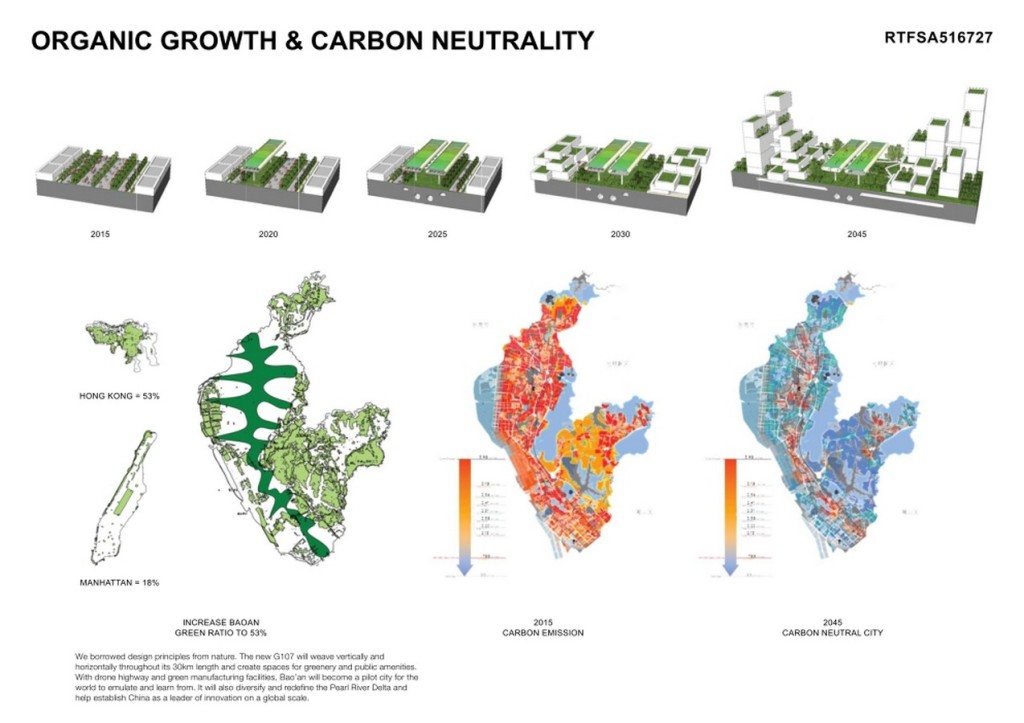
©Avoid Obvious Architects
Water Management: Water treatment has been a problem for Bao’an. They have flooding problem and their wastewater treatment plants are 40% over their capacity. Organic Highway will have underground basins and other recharging techniques to make the city permeable. Through mobile apps, their citizens can constantly monitor water usage to get rewarded.
Business Trend and the Concept of Sharing Economy: Our design intent is not to give up Bao’an as a manufacturing town, but to upgrade its facilities into a “Green Manufacturing City” with the power to share and connect people, places, and amenities. This sustainable city will celebrate the new “sharing economy” with facilities like transparent factories, drone ports for deliveries, open platforms for experiments, mobile offices, mobile clinics and more outdoor spaces. Similar to how library works, the concept of sharing lowers the need for personal amenities. The carbon consumption of those facilities will get divided by multiple users to make it more sustainable.
With drone highway and green manufacturing facilities, Bao’an will help China to become the leader of innovation on a global scale.
- ©Avoid Obvious Architects
- ©Avoid Obvious Architects
- ©Avoid Obvious Architects
